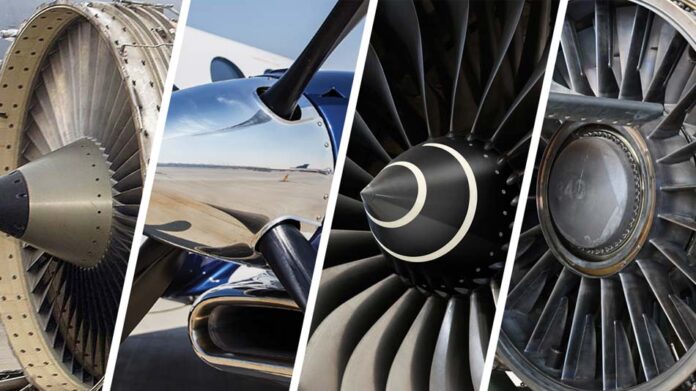Table of Contents
Ready to embark on an exhilarating adventure through the clouds? Strap in tight because we’re about to take a thrilling ride through the latest and greatest innovations soaring high in the world of aviation equipment available via the likes of Pilot John International!
Setting the Stage: A Glimpse Back and a Look Forward
Before we dive into the future, let’s take a quick glance back at where we’ve been. From the early yet groundbreaking flights of the Wright brothers to the supersonic leaps of the Concorde, aviation has always been a realm of innovation and ambition. But what about today? What marvels are propelling us into the future of flight?
Aeronautical Artistry: The Beauty of Advanced Aircraft Designs
Streamlined Sleekness
Gone are the days of clunky metal behemoths dominating the skies. Today’s aircraft are sleek, sophisticated, and oh-so-efficient. Engineers are harnessing the power of advanced materials and cutting-edge design principles to craft flying marvels that slice through the air with grace and precision.
Electric Dreams
Picture this: the gentle hum of an electric motor, the whisper of the wind as it glides over sleek wings. Electric propulsion systems are revolutionizing the aviation industry, offering a cleaner, quieter, and more sustainable way to take to the skies. With each passing day, we edge closer to a future where electric aircraft rule the skies.
Navigating the Future: Charting a Course with State-of-the-Art Navigation Systems
Precision Personified: GPS at its Finest
Navigation is the lifeblood of aviation, and precision is paramount. Thanks to advancements in GPS technology, pilots now have access to pinpoint accuracy, ensuring they stay on course and reach their destinations safely and efficiently.
Seeing is Believing: The Rise of Synthetic Vision Systems
Imagine flying through dense fog or swirling clouds with crystal-clear vision. Synthetic vision systems make it possible, offering pilots a virtual view of the world around them even in the most challenging conditions. With SVS technology on their side, pilots can navigate with confidence, no matter what Mother Nature throws their way.
Cockpit Chronicles: A Peek Inside the Next-Generation Cockpit
The Glass Cockpit: Where Clarity Meets Control
Out with the old, in with the new! Analog cockpit displays are a thing of the past, replaced by sleek, intuitive glass cockpit displays that put critical information right at the pilot’s fingertips. With customizable layouts and real-time data updates, these digital marvels make flying safer and more efficient than ever before.
Heads-Up, Eyes Forward: The Magic of HUDs
Who needs to glance down at a panel of instruments when you can keep your eyes on the prize? Heads-up displays project essential flight information right into the pilot’s line of sight, allowing them to stay focused on the task at hand without ever losing sight of the sky ahead.
Safety First: Innovations That Keep Us Soaring Securely
A Watchful Eye: Collision Avoidance Systems
In a crowded sky, safety is paramount. That’s where collision avoidance systems come in, using advanced sensors and algorithms to keep a vigilant watch over the airspace and alert pilots to potential hazards before they become disasters.
When Seconds Count: Automatic Emergency Landing Systems
In the event of an emergency, every second counts. Automatic emergency landing systems are a lifesaver, taking control of the aircraft and guiding it to safety with precision and grace. With these systems on board, pilots can rest assured knowing that help is just a button press away.
The Sky’s the Limit: Embracing the Future of Aviation
As we gaze into the horizon of tomorrow, one thing is abundantly clear: the future of aviation is brighter than ever before. With each passing day, new technologies emerge, pushing the boundaries of what’s possible and opening up new frontiers in the world of flight. So buckle up, my friends, and get ready for the journey of a lifetime. The sky’s the limit, and the adventure awaits!
And there you have it, folks – a whirlwind tour through the latest innovations in aviation equipment. From advanced aircraft designs to state-of-the-art navigation systems and cutting-edge safety features, the future of flight has never looked brighter. So let’s strap in, spread our wings, and soar into the boundless blue yonder together.
Frequently Asked Questions (FAQs)
Are electric-powered aircraft reliable for long-distance flights?
While electric propulsion systems are still relatively new, advancements in battery technology and motor efficiency are improving their reliability and range. Many electric-powered aircraft are already capable of flying short to medium distances, and with further innovation, long-distance electric flights may become a reality shortly.
How do collision avoidance systems work?
Collision avoidance systems use a combination of sensors, such as radar, lidar, and cameras, to detect nearby objects and potential collision hazards. When a threat is detected, the system alerts the pilot and may take evasive action, such as issuing warnings or automatically adjusting the aircraft’s trajectory to avoid a collision.
What are the benefits of synthetic vision systems?
Synthetic vision systems enhance pilot situational awareness by providing a virtual representation of the surrounding terrain, even in low-visibility conditions. This helps pilots navigate safely and confidently, reducing the risk of accidents and improving overall flight safety.
Are glass cockpit displays difficult to learn for pilots accustomed to traditional analog instruments?
While transitioning to glass cockpit displays may require some training and familiarization for pilots accustomed to traditional analog instruments, many pilots find them intuitive and user-friendly once they become accustomed to the new interface. Additionally, the enhanced functionality and clarity of glass cockpit displays can improve overall pilot performance and efficiency.
How do automatic emergency landing systems differ from autopilot?
Autopilot systems are designed to assist pilots with routine flight tasks, such as maintaining altitude and heading, while automatic emergency landing systems are specifically designed to take control of the aircraft in emergency situations, such as engine failure or pilot incapacitation, and safely land it without pilot intervention.















